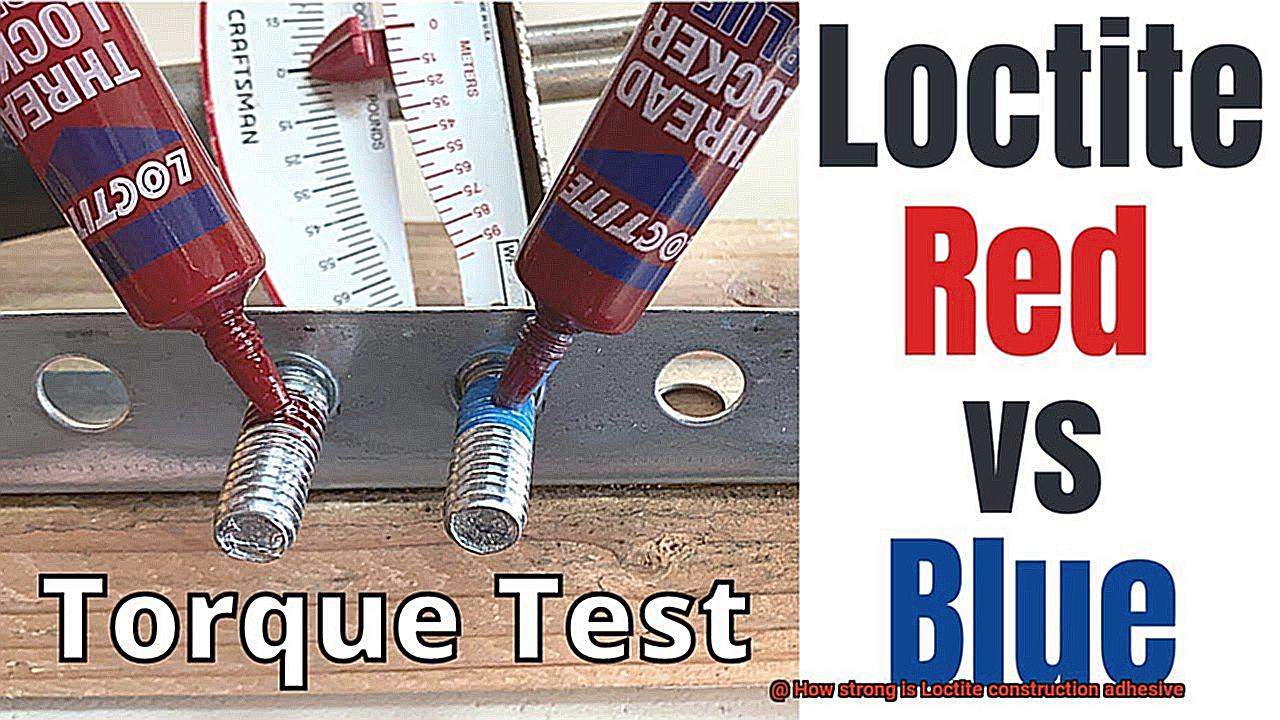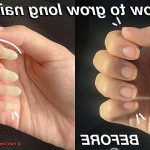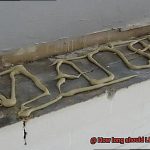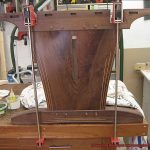Loctite construction adhesive – the ultimate powerhouse in the world of construction and DIY.
Forget everything you thought you knew about sticky stuff not being able to handle the heavy lifting. Loctite’s adhesive is like a superhero, defying gravity and standing tall against the test of time.
It doesn’t matter if you’re bonding wood, metal, or concrete – this stuff means business. And it’s not just for the big jobs either; it effortlessly secures even the most delicate decorative pieces.
Builders and craftsmen can’t get enough of it. But here’s the burning question: just how strong is Loctite construction adhesive?
So sit tight, my friend, because you won’t want to miss out on this sticky adventure.
Different Formulations of Loctite Construction Adhesive
Contents
- 1 Different Formulations of Loctite Construction Adhesive
- 2 How Loctite Forms a Strong Bond
- 3 Loctite’s Ability to Withstand Static and Dynamic Loads
- 4 Resistance to Moisture, Temperature Changes, and Chemicals
- 5 Proper Surface Preparation for Optimal Bonding Performance
- 6 Curing Time for Maximum Strength
- 7 Professional Advice for Specific Requirements
- 8 Conclusion
When it comes to construction projects, having the right adhesive can make all the difference. Loctite, a trusted brand in adhesives, offers a variety of formulations to meet different bonding needs. From exceptional strength and versatility to quick curing time and resistance to environmental factors, each formulation has its own advantages over other types of adhesive. In this article, we will explore the different formulations of Loctite Construction Adhesive and how they vary in terms of strength and performance.
One of the most popular formulations is Loctite PL Premium Polyurethane Construction Adhesive. This adhesive is known for its exceptional strength and versatility. It can bond to a variety of materials, including wood, concrete, metal, and even plastics. Whether you’re working on a woodworking project or need to securely bond metal surfaces, this formulation has got you covered. Additionally, it is resistant to water, weathering, and extreme temperatures, making it suitable for both indoor and outdoor applications.
If you’re looking for an adhesive specifically designed for interior projects, Loctite Power Grab Ultimate Construction Adhesive is a great choice. It offers a strong bond without the need for nails or screws, thanks to its high initial grab. This means that it holds objects in place immediately after application, allowing you to proceed with your project without any delay. Whether you’re installing baseboards or attaching crown molding, this formulation will provide a reliable bond.
Loctite also offers formulations that are tailored for specific construction needs. For subfloor and deck projects, Loctite PL 400 Subfloor and Deck Adhesive is the go-to choice. It provides a strong bond between subfloors and joists, as well as between deck boards. With its resistance to moisture and ability to withstand heavy loads, you can be confident in the stability of your flooring or decking.
If time is of the essence, Loctite Power Grab Express Construction Adhesive is the answer. This formulation sets in just minutes and provides a strong bond that can withstand heavy loads. It is ideal for quick repairs or small projects, allowing you to finish your project in no time.
For demanding projects that require an extra-strong bond, Loctite PL 375 Heavy Duty Construction Adhesive is the formulation you need. It can be used on a wide range of materials, including wood, metal, concrete, and ceramics. With its excellent resistance to water, heat, and cold temperatures, it is perfect for both indoor and outdoor applications.
Lastly, if you’re looking for a general-purpose adhesive that offers a strong bond for a variety of projects, Loctite PL 200 Projects Construction Adhesive is the right choice. It can be used on both interior and exterior surfaces and offers good resistance to moisture and weathering.
How Loctite Forms a Strong Bond
Loctite construction adhesive is renowned for its exceptional bonding strength and durability. But what makes Loctite so effective at forming a strong bond? In this article, we will delve into the science behind the stickiness and explore the unique properties that make Loctite an adhesive powerhouse.
The Power of Polymerization:
Loctite adhesives contain polymers that react with moisture in the air or on the substrate surface. This triggers a chemical reaction called polymerization, transforming the adhesive from a liquid or gel-like state into a solid. This process allows Loctite to penetrate the surfaces being bonded, filling in tiny imperfections and irregularities. The result is a tight grip that creates a strong and permanent bond.
Mechanical Grip:
In addition to its chemical properties, Loctite adhesives form a mechanical grip by interlocking with the surface of the materials being bonded. The adhesive seeps into crevices, ensuring maximum adhesion and preventing any weak spots. This mechanical grip is crucial for withstanding various forces, including shear, tension, and impact.
Chemical Bonds:
Loctite adhesives also form chemical bonds with the substrate materials, further enhancing the overall strength of the bond. These bonds are not affected by temperature changes, moisture, or exposure to chemicals, making them suitable for indoor and outdoor applications alike.
Stress Distribution:
One of Loctite’s key strengths lies in its ability to distribute stress evenly across the bonded area. By minimizing localized stress concentrations, it ensures long-term durability and prevents weakening of the bond over time.
Gap-Filling Properties:
Loctite adhesives excel in filling small gaps and irregularities between surfaces. This ability ensures a tight fit and increases the overall strength of the bond. Whether you’re working with uneven surfaces or need to bridge small gaps, Loctite has got you covered.
Loctite’s Ability to Withstand Static and Dynamic Loads
Loctite construction adhesive is here to save the day with its exceptional strength and ability to withstand both static and dynamic loads.
Let’s dive into the world of static and dynamic loads. Static loads refer to the weight or force that remains constant over time. Think about that heavy bookshelf or the structure supporting a fixed load. On the other hand, dynamic loads involve forces that change or fluctuate over time. We’re talking about vibrations, impacts, and movements.
So how does Loctite construction adhesive tackle these forces head-on? It’s all in the design. This adhesive forms a strong bond between surfaces, distributing the load evenly across the joint. Imagine a web of strength connecting every inch of the bond. This means that even under prolonged pressure or stress, the adhesive will maintain its hold and prevent any movement or failure in the bonded surfaces.
Loctite doesn’t stop at static loads. It also excels in handling dynamic loads. Picture an adhesive with nerves of steel, ready to take on any challenge. Its flexibility allows it to absorb shocks and vibrations, reducing the risk of loosening or failure over time. It’s like having a cushioned armor protecting your project from the harsh blows of everyday life.
In high-stress environments where constant movement or frequent impacts are expected, Loctite construction adhesive provides reliable strength and stability. It’s like having a guardian angel for your construction projects, ensuring they stand strong against any force thrown their way.
However, it’s important to note that the specific strength and load-bearing capacity may vary depending on the product variant and application conditions. But fear not. Manufacturers provide technical data sheets and guidelines to help you choose the right adhesive for your specific needs. They’ve got your back.
To ensure the best results, follow the manufacturer’s instructions and make sure to prepare the surface properly before applying the adhesive. Treat it like an artist’s canvas, ready to receive the masterpiece of strength. And don’t forget about regular inspections and maintenance to keep that bond intact over time. It’s like giving your project a well-deserved check-up.
Resistance to Moisture, Temperature Changes, and Chemicals
When it comes to selecting a glue for your construction projects, you need one that can withstand the test of time and the harshest environments. Enter Loctite construction adhesive – a formidable adhesive known for its exceptional resistance to moisture, temperature changes, and chemicals. As a favorite among professionals and DIY enthusiasts alike, Loctite offers the reliability and durability necessary for any project.
Resistance to Moisture:
Picture constructing a wooden deck or installing tiles in your bathroom, only to find the adhesive weakening and deteriorating due to moisture exposure. With Loctite construction adhesive, those worries are a thing of the past. This remarkable glue thrives even in wet and humid conditions, forming an unbreakable bond impervious to water. Whether your project is outdoors or in moisture-prone areas like kitchens and bathrooms, Loctite ensures steadfastness.
Resistance to Temperature Changes:
From freezing winters that nip at your fingers to scorching summers that make you sweat, Loctite construction adhesive scoffs at extreme temperature fluctuations. Unlike other glues that become brittle or lose their bond under intense heat or cold, this adhesive is engineered to maintain its strength and integrity regardless of the weather. Whether you’re working in a fluctuating garage or attic or tackling an outdoor project exposed to the elements, Loctite has your back.
Resistance to Chemicals:
In a world filled with chemical cleaners, solvents, and oils, not all glues can stand up to the challenge. But Loctite construction adhesive isn’t just any glue – it’s a superhero against chemicals. Possessing an impressive resistance to a wide range of common household chemicals, this adhesive ensures your project remains secure. So whether you’re concerned about contact with cleaning agents or oils, rest easy knowing that Loctite will keep your bond strong and secure.
Proper Surface Preparation for Optimal Bonding Performance
Achieving unbreakable bonds with Loctite construction adhesive requires more than just grabbing a tube and sticking things together. The secret lies in proper surface preparation – a crucial step that can make or break your bonding performance. By following these key steps, you can ensure optimal bonding performance and maximize the strength of the adhesive bond.

Step 1: Cleanliness is Next to Bondiness
Before applying any adhesive, it is imperative to start with a squeaky clean surface. Dirt, dust, grease, or other contaminants can hinder the adhesive’s ability to bond effectively. To ensure a spotless surface, use a suitable cleaner or solvent that is compatible with the materials being bonded. Follow the manufacturer’s instructions carefully to remove all traces of dirt and grease.
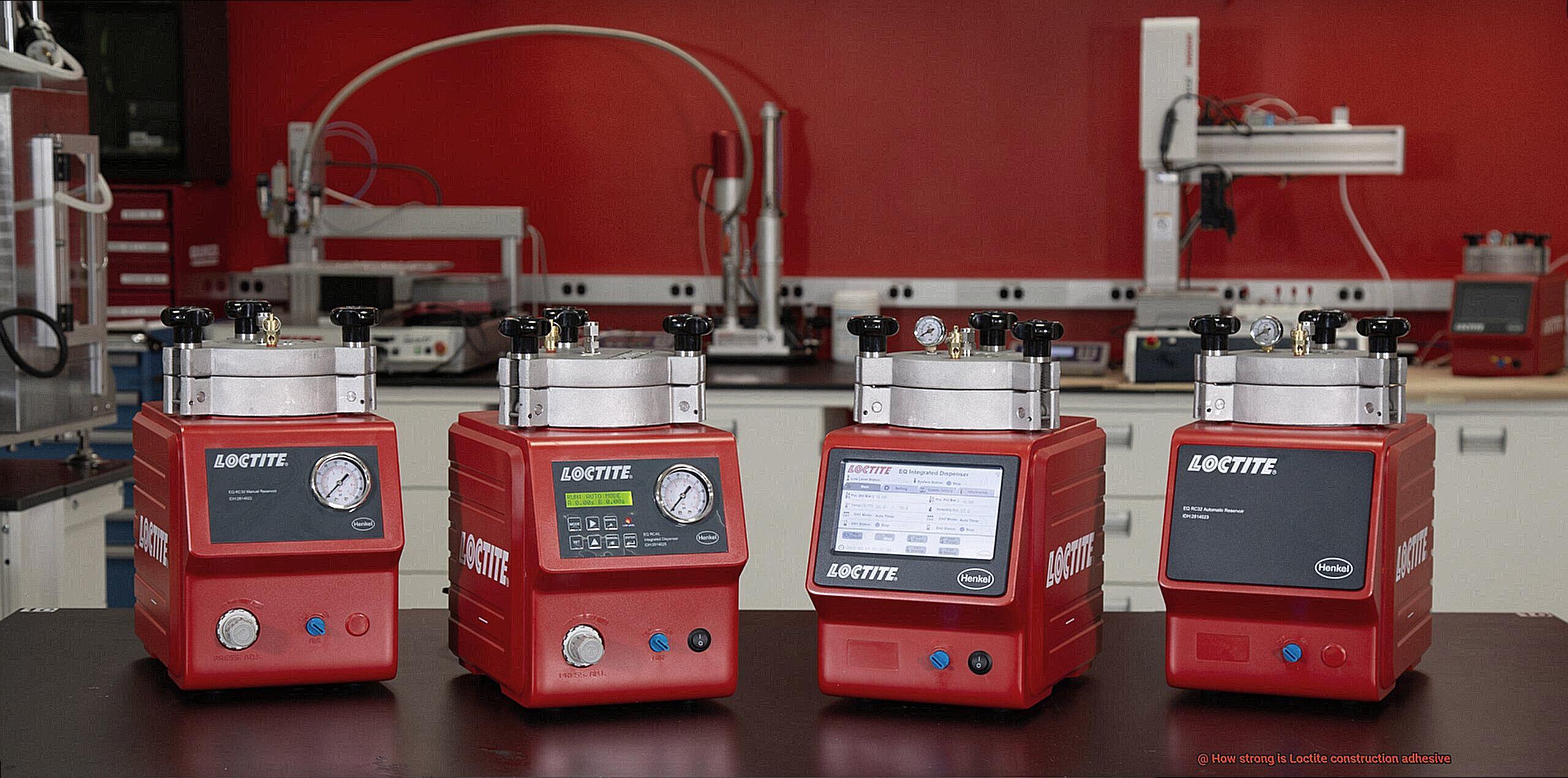
Step 2: Roughen Up for a Better Grip
Smooth surfaces are not adhesive-friendly. That’s why roughening the surface is essential for optimal bonding performance. Use sandpaper or a wire brush to create a textured surface that provides a mechanical grip for the adhesive. This process increases the surface area available for bonding, allowing Loctite construction adhesive to form an unbreakable bond.
Step 3: No Debris Allowed
After roughening the surface, it is crucial to remove any debris or dust resulting from the process. Even tiny particles can interfere with bonding performance. Use a clean brush or compressed air to thoroughly clean the surface, ensuring there are no remnants of the roughening process.
Step 4: Priming for Perfection
In some cases, especially when working with porous materials like wood or concrete, applying a primer can work wonders for bonding performance. Primers help seal the surface and improve adhesion by promoting better wetting of the adhesive. Follow the manufacturer’s instructions for priming and allow sufficient drying time before proceeding with the adhesive application.
Step 5: Temperature and Humidity – The Perfect Conditions
Don’t forget to consider the temperature and humidity conditions during surface preparation and bonding. Extreme temperatures or high humidity levels can significantly affect adhesive performance. Make sure to check the recommended range specified by Loctite and ensure that the conditions are within that range for optimal bonding performance.
Curing Time for Maximum Strength
Loctite construction adhesive is a trusted choice for bonding materials together. But did you know that patience is the key to unlocking its maximum strength? In this article, we will dive into the importance of curing time and explore factors that influence it, revealing why waiting for full cure is essential.
The Science Behind Curing Time:
Curing time refers to the duration required for Loctite construction adhesive to reach its peak strength after application. Typically, it takes around 24 hours for the adhesive to fully cure, ensuring optimal bond strength. However, this timeline can be influenced by various factors.
Temperature and humidity play crucial roles in the adhesive’s curing process. Higher temperatures speed up curing, while lower temperatures slow it down. Similarly, higher humidity levels expedite the process, while lower levels extend curing time. Adhering to the manufacturer’s instructions regarding ideal curing conditions is critical for achieving maximum bond strength.
Why Patience Pays Off:
Although Loctite construction adhesive may exhibit usable strength within a few hours, rushing the curing process compromises bond durability. Applying excessive force or stress before the recommended curing time can weaken the bond. To ensure an even stronger bond, additional support or clamping during curing is advisable.
Moreover, exposing freshly applied adhesive to water or liquids during the curing process interferes with its ability to bond effectively. Therefore, patience truly pays off in achieving lasting adhesion.
Professional Advice for Specific Requirements
When it comes to bonding materials for your construction projects, Loctite construction adhesive is a trusted name that guarantees strength and reliability. However, selecting the right type of adhesive can be a daunting task, especially with the wide range of choices available. Fear not. In this comprehensive guide, we will walk you through the process of choosing the perfect Loctite construction adhesive for your specific requirements.
Consider Your Project Requirements:
Before delving into the vast world of adhesives, it’s crucial to consider the specific requirements of your project. Are you bonding heavy-duty materials or working in extreme temperatures? These factors will guide you towards the ideal formula.
Types of Loctite Construction Adhesives:
Loctite offers a variety of construction adhesives, each designed for specific applications. Let’s take a closer look at some of their strengths:
- Heavy-Duty Adhesive: Perfect for bonding heavy materials like wood, metal, and concrete. It provides exceptional strength and is ideal for demanding projects.
- All-Purpose Adhesive: A versatile adhesive suitable for a wide range of materials, including plastics and ceramics. It offers a strong bond with excellent resistance to water, heat, and impact.
- High-Temperature Adhesive: Your go-to choice when working in extreme temperatures. It ensures a robust bond even in environments where other adhesives may fail.
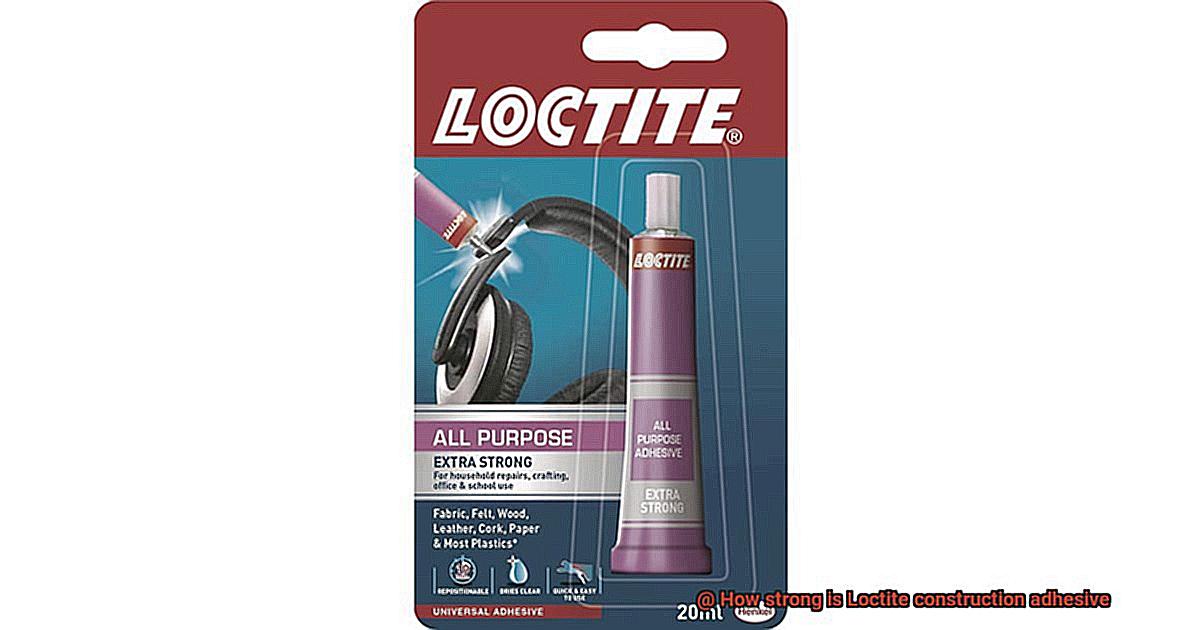
Application Tips:
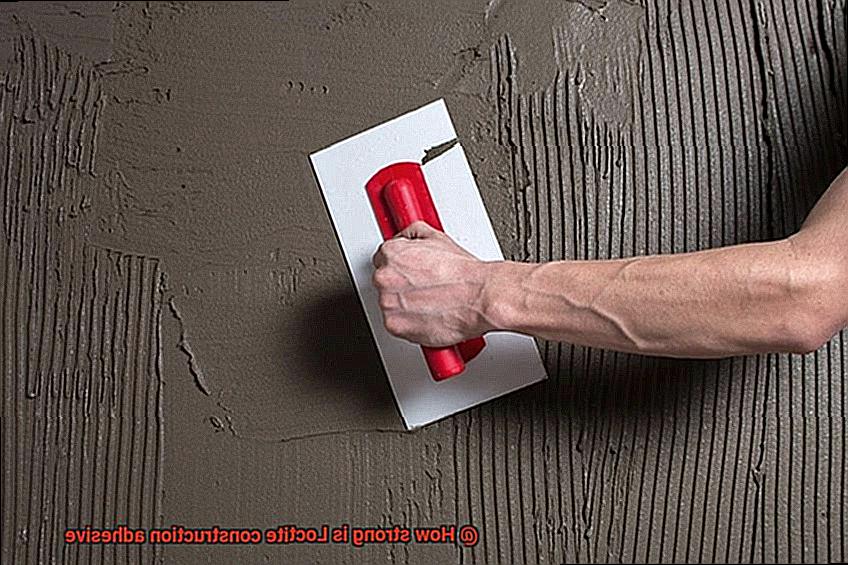
To achieve optimal results with your Loctite construction adhesive, follow these tips:
- Surface Preparation: Thoroughly clean and roughen the surfaces to be bonded before applying the adhesive. This step enhances adhesion and ensures a strong bond.
- Test Bonding: Before applying the adhesive to a large area, test it on a small section to ensure compatibility and desired strength.
- Follow Instructions: Always read and follow the manufacturer’s instructions for application, curing time, and safety precautions. This will ensure the best possible outcome.
- Apply Adequate Amount: Avoid using excessive amounts of adhesive, as this can result in weaker bonds and longer curing times. Use the recommended amount for optimal results.
Safety Considerations:
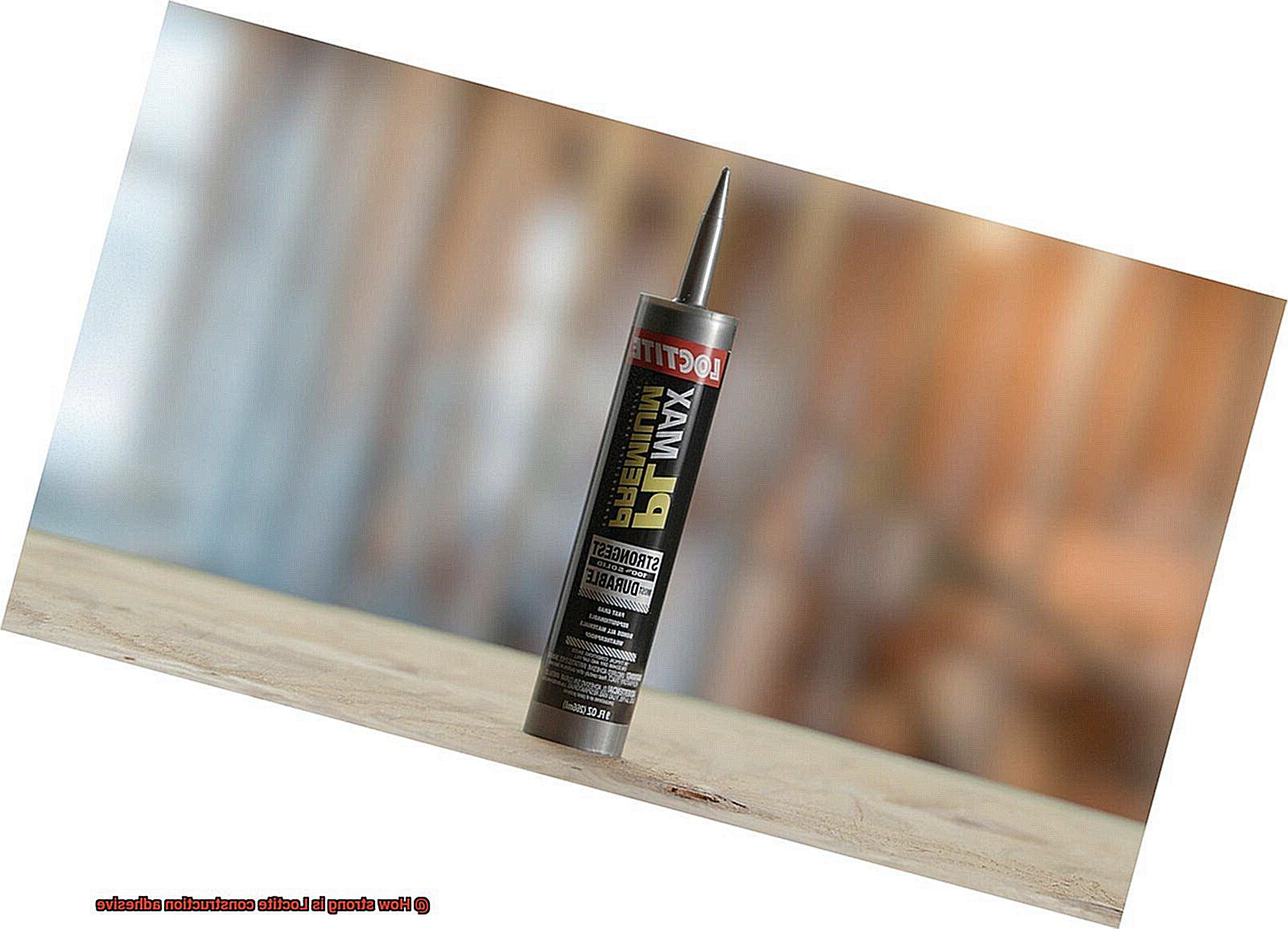
While Loctite construction adhesives are safe to use, it’s important to take certain precautions:
Ventilation: Ensure proper ventilation when working with adhesive to avoid inhalation of fumes.
Skin Protection: Wear gloves to protect your skin from direct contact with the adhesive.
Eye Protection: Use safety goggles or glasses to shield your eyes from potential splashes.
uSvLCbE1g6s” >
Conclusion
In conclusion, Loctite construction adhesive is a true powerhouse in the world of construction and DIY. Its exceptional strength and versatility make it the go-to choice for bonding a wide range of materials – from wood and metal to concrete and plastics. No matter the project, big or small, Loctite has your back.
The secret behind the strength of Loctite construction adhesive lies in its unique formulation and bonding properties. It creates powerful chemical bonds with the materials, while also locking into place on the surface for an extra grip. This winning combination ensures maximum adhesion without any weak spots.
Loctite construction adhesive can handle both static and dynamic loads like a champ. It evenly distributes stress across the bonded area, guaranteeing long-term durability even under prolonged pressure or stress. And with its flexibility, it can absorb shocks and vibrations, minimizing the risk of loosening or failure over time.
But that’s not all – Loctite construction adhesive is also resistant to moisture, temperature changes, and chemicals. It thrives in wet and humid conditions, maintains its strength no matter how extreme the temperature gets, and fights off common household chemicals like a superhero.
To unleash the full bonding potential of Loctite construction adhesive, proper surface preparation is key. Thoroughly cleaning the surface, roughening it up for better grip, removing any debris, and priming if necessary are crucial steps to ensure a bond that’s as strong as steel.
Remember: patience is a virtue when working with Loctite construction adhesive. It needs sufficient curing time to reach its maximum strength. Rushing through this process can jeopardize the durability of your bond – so take your time.
Overall, Loctite construction adhesive delivers reliable strength and stability for all your construction projects.

